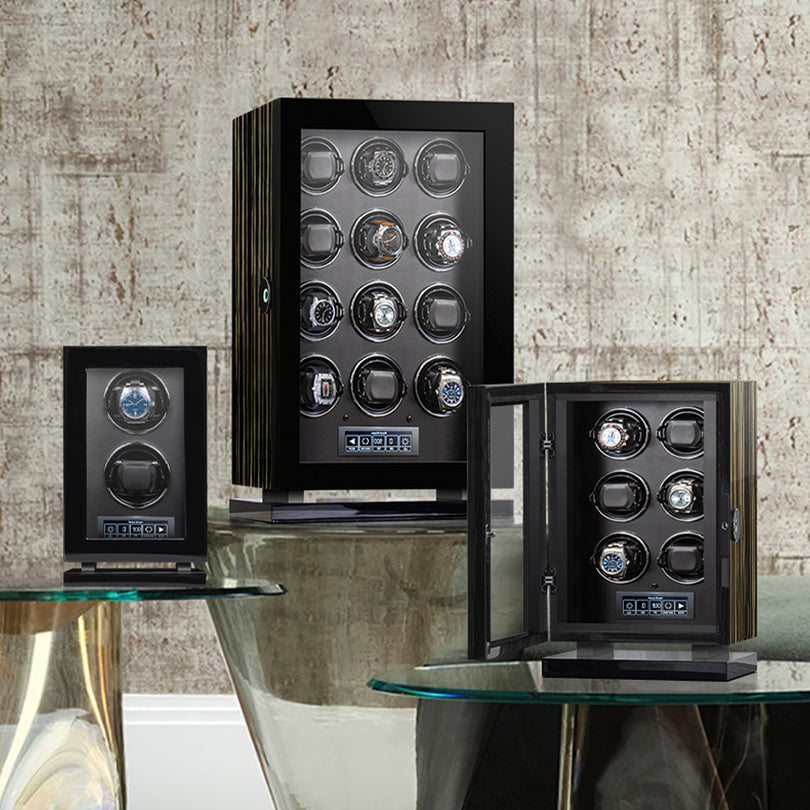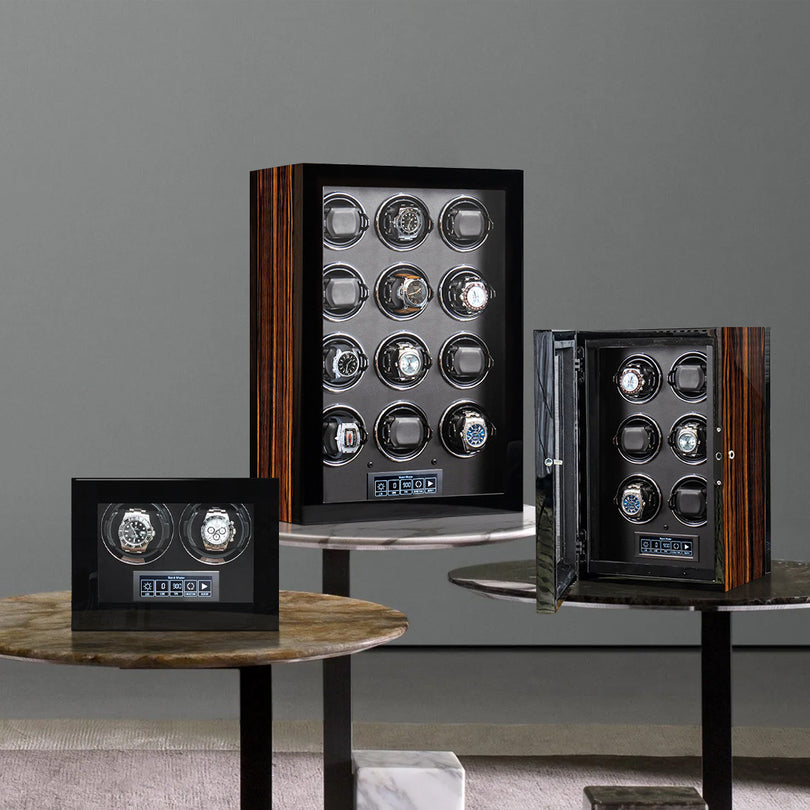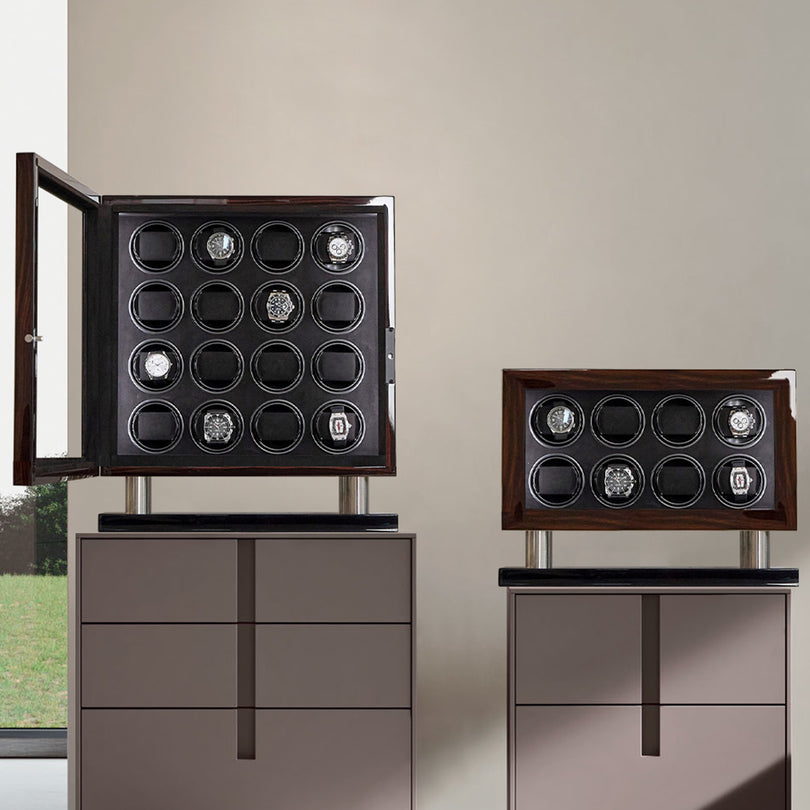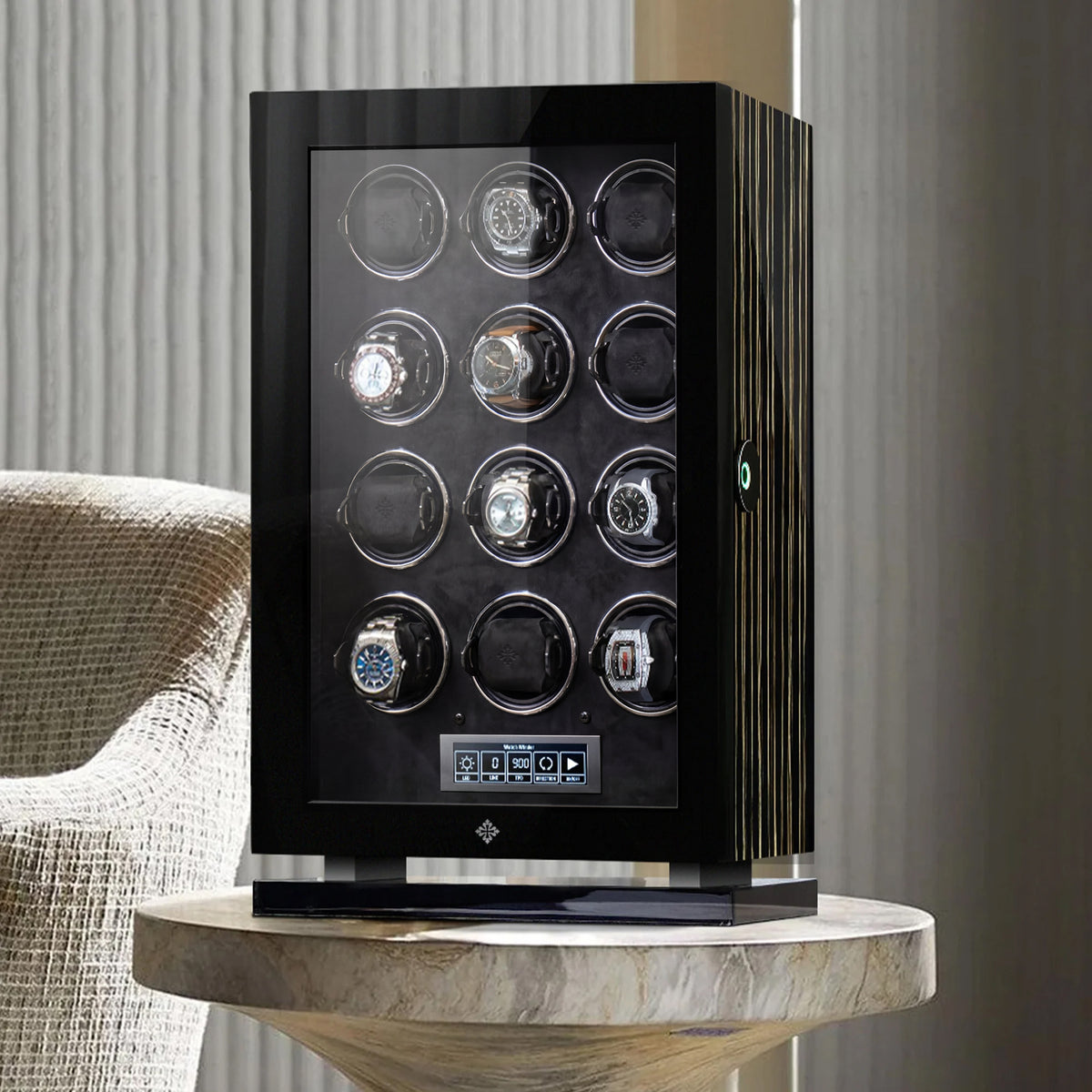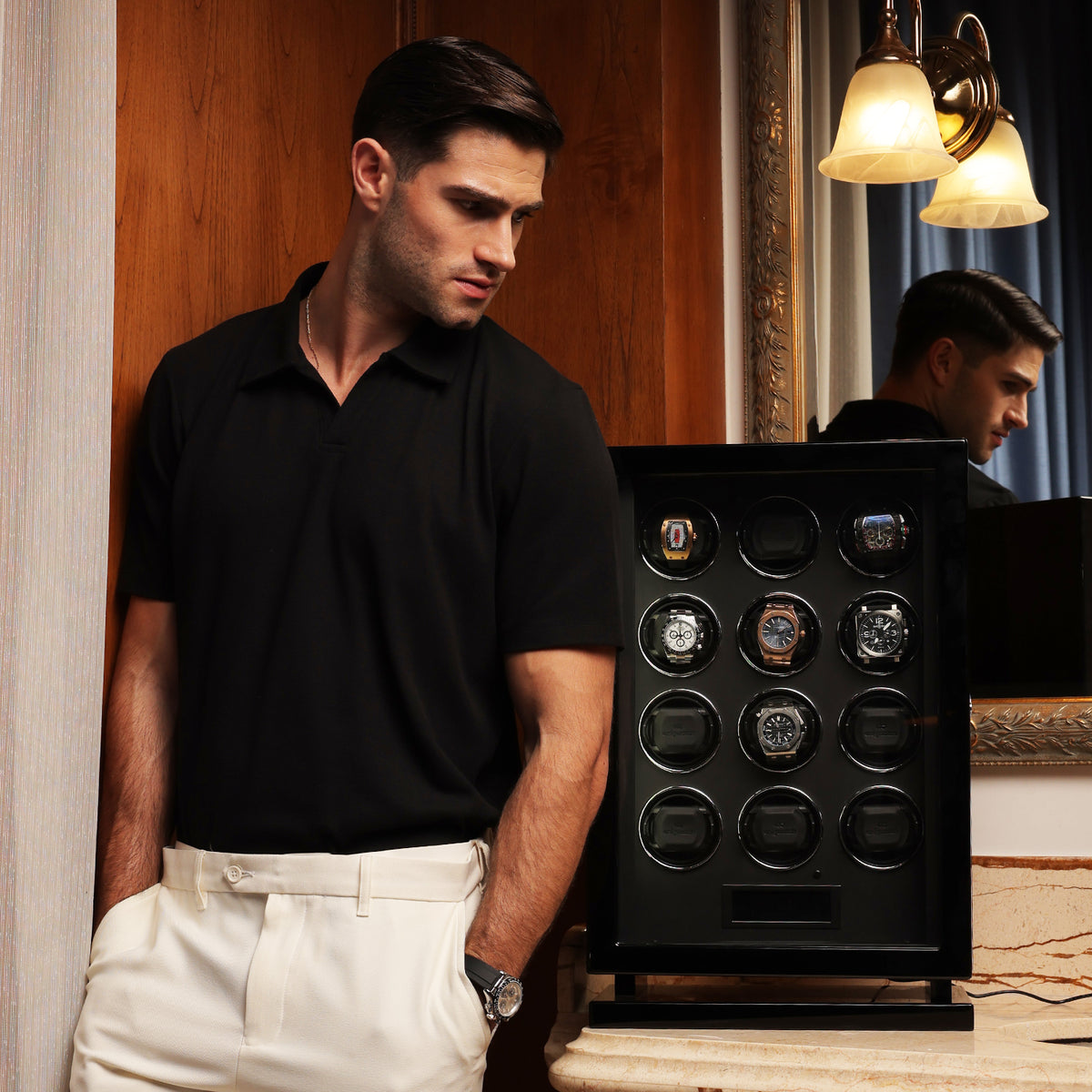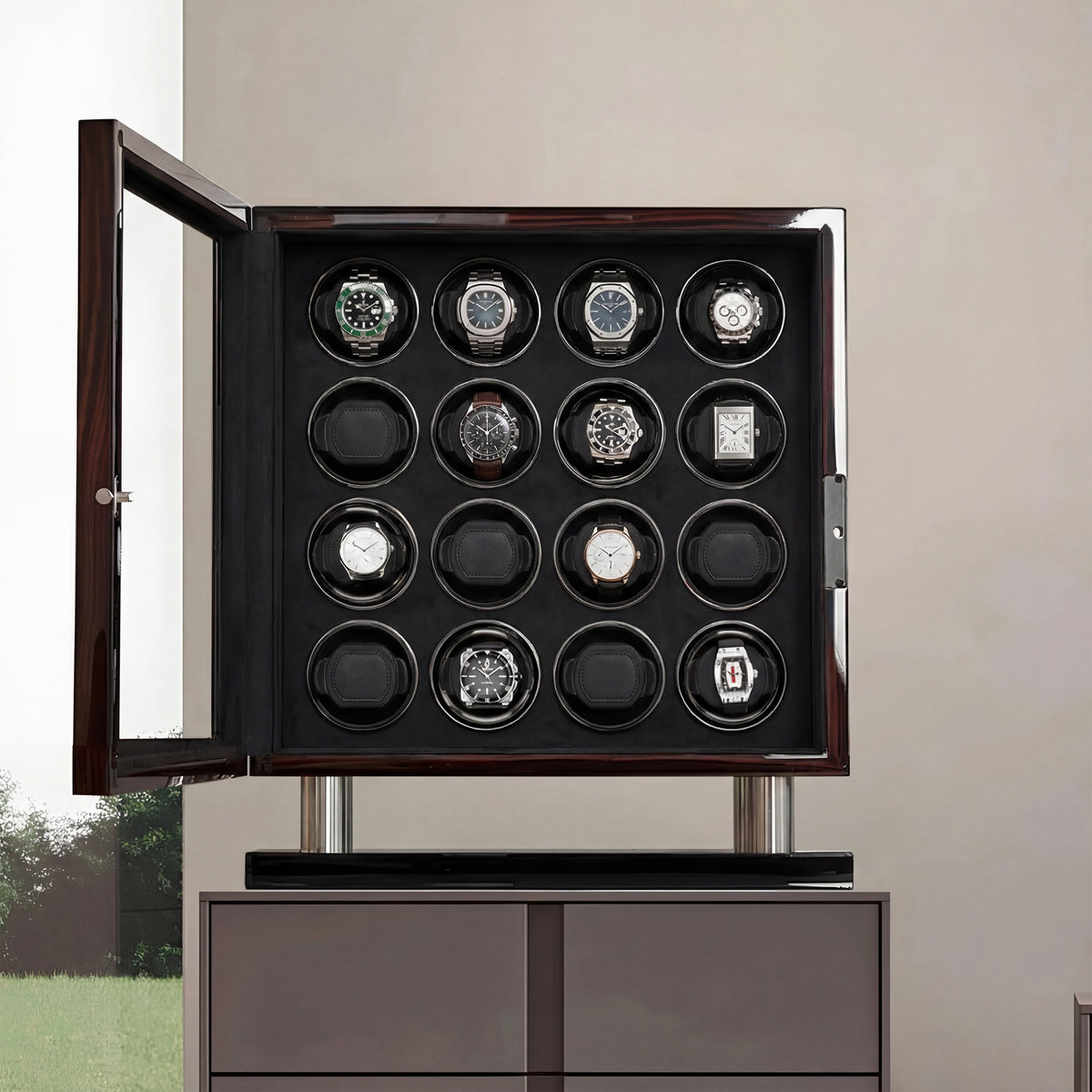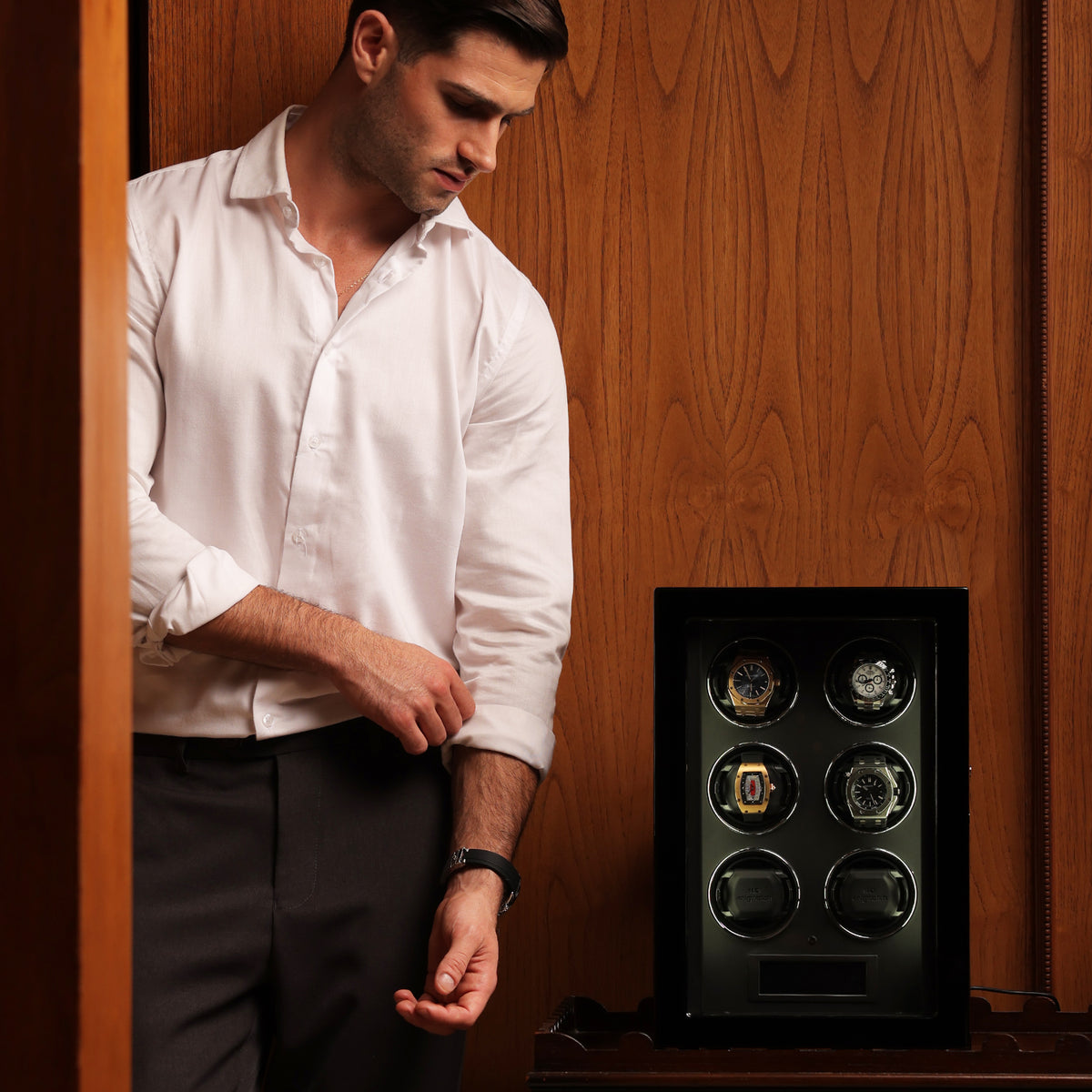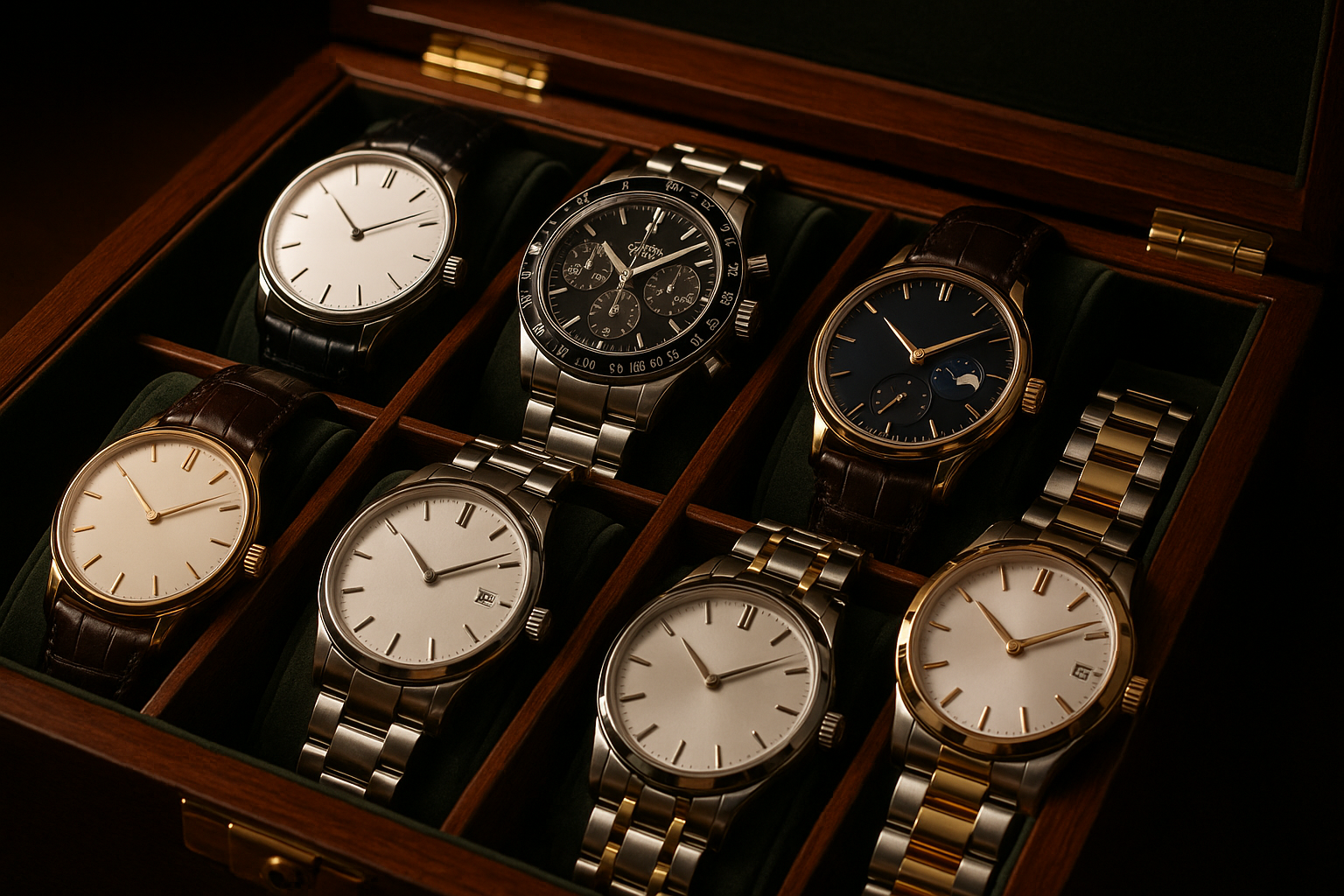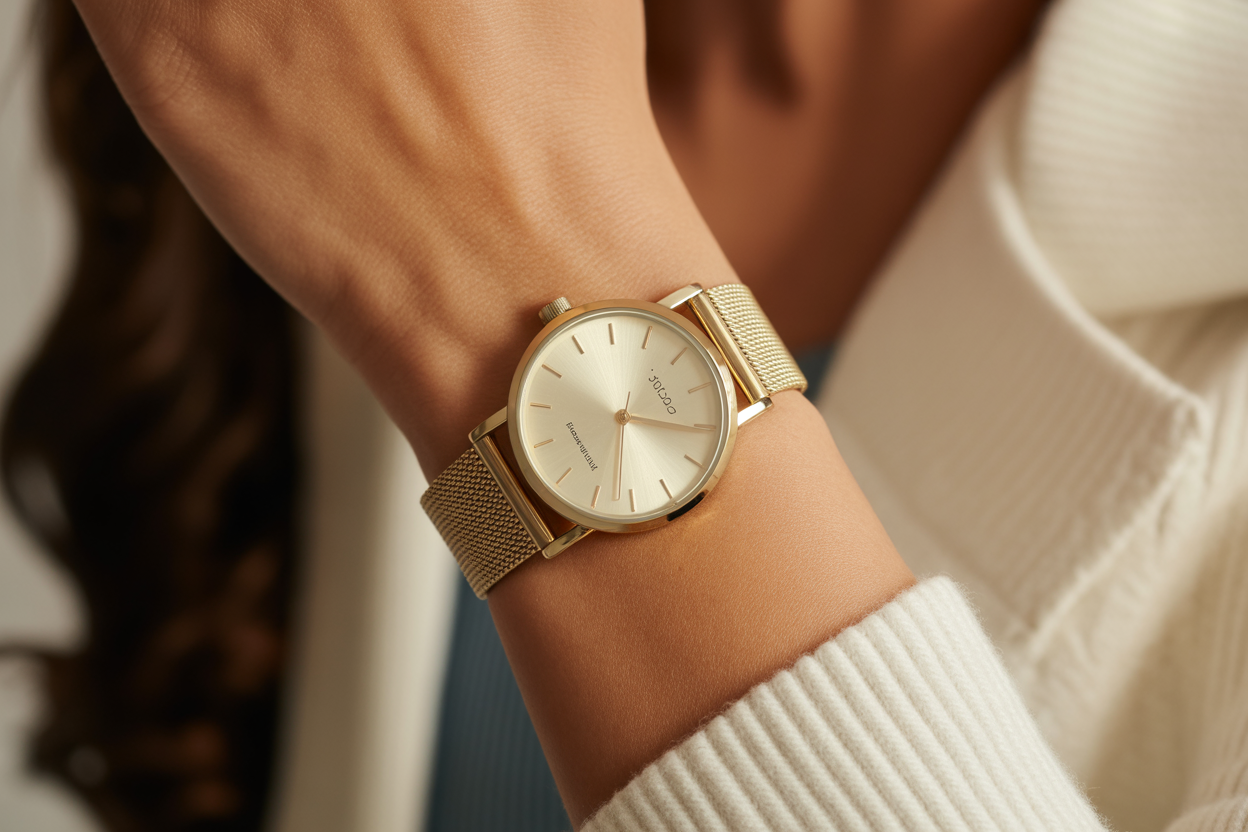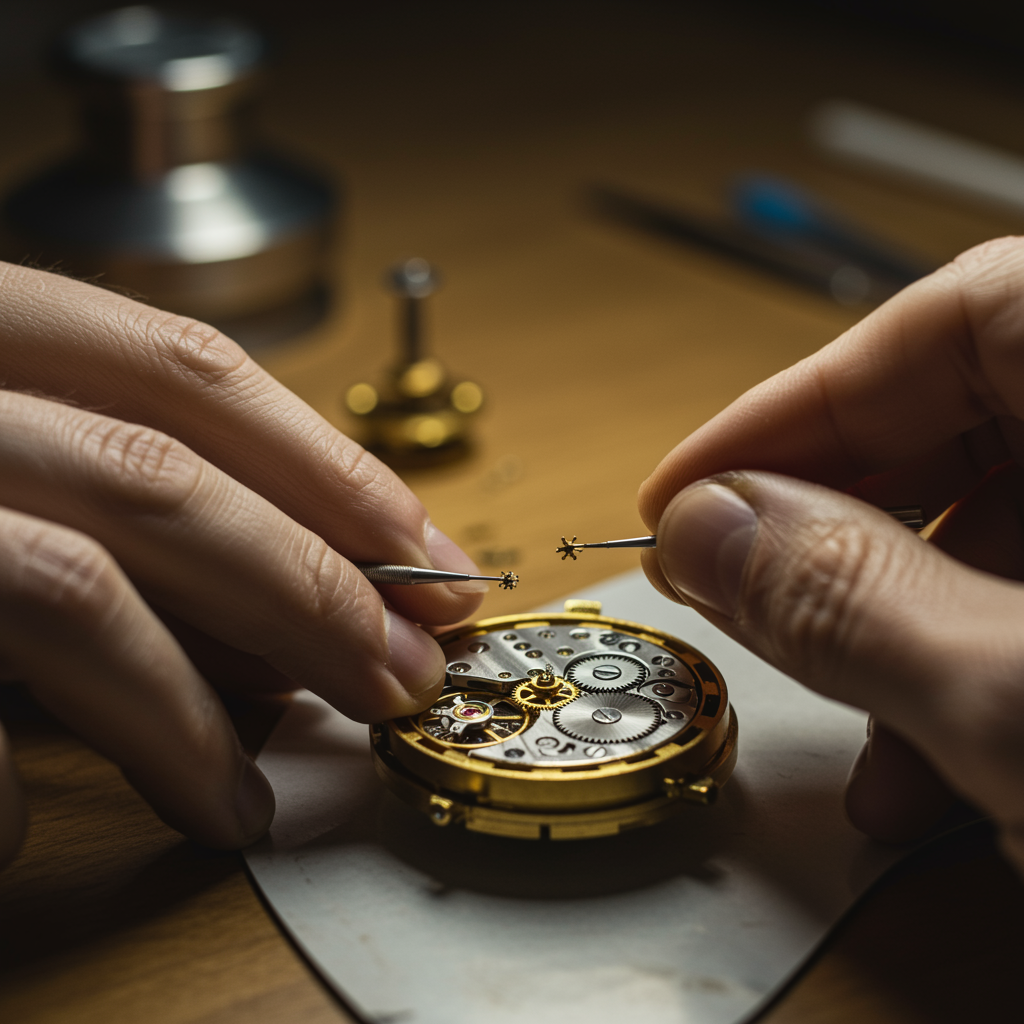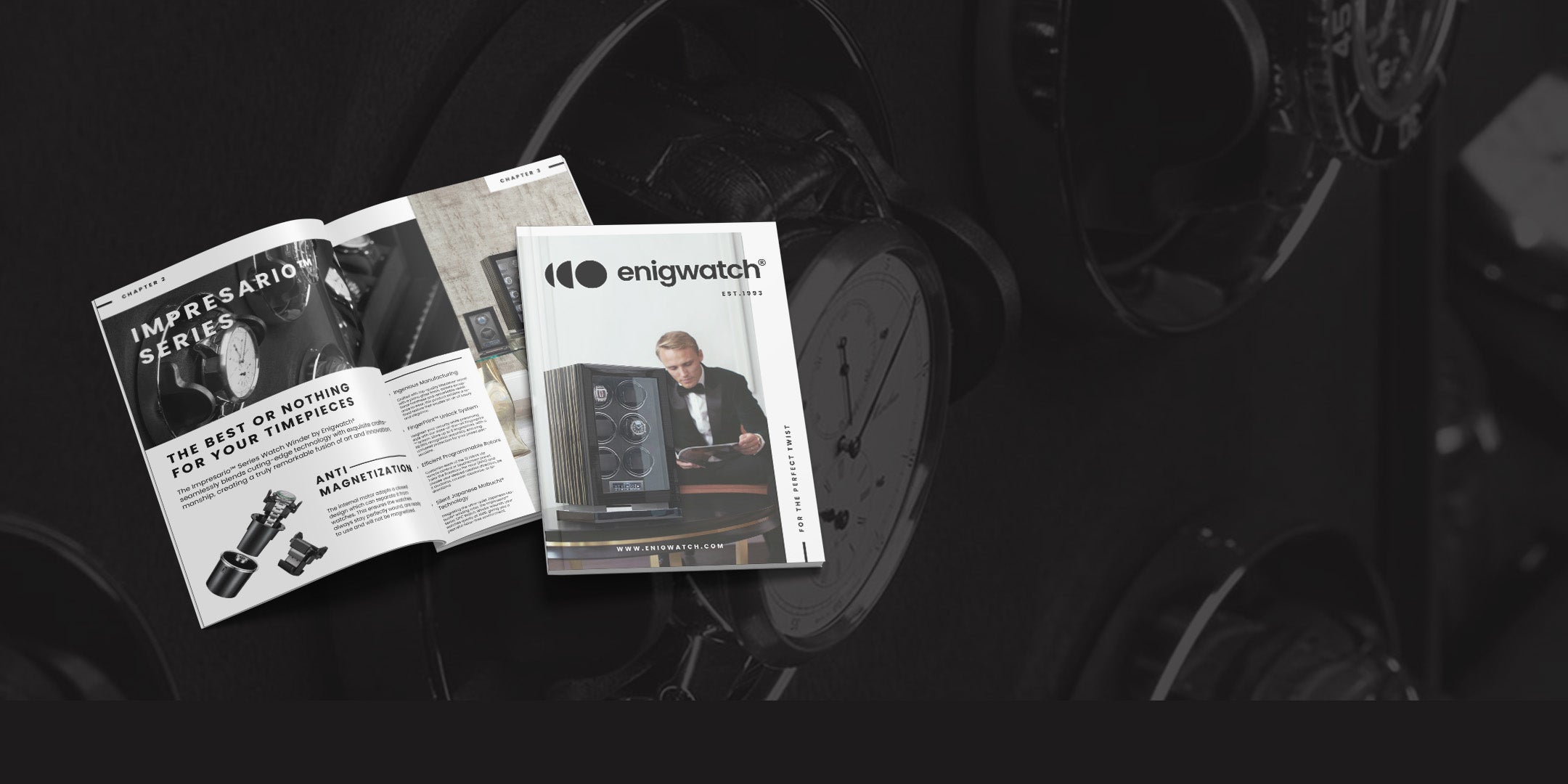In the world of horology, the debate between automatic and hand wind watches is as old as time itself. Both types of watches boast their unique charm and complexities. This article delves into the nuances of automatic versus hand wind watches, aiming to help you understand their differences and decide which type best resonates with your personal style and needs.
To begin with, we'll explore the operation of both types, unraveling the mysteries behind their mechanisms. Additionally, we will examine the craftsmanship involved and the distinct experiences each type offers to the wearer. Whether you are a seasoned collector or a newcomer to the world of fine timepieces, understanding these differences is crucial to appreciating the artistry and engineering behind every watch.
Moreover, join us as we delve deeper into the world of automatic and hand wind watches, comparing their features, advantages, and the unique appeal they hold for watch enthusiasts around the globe.
Read more: Manual vs Automatic Watch: Which One to Choose?
Understanding the Mainspring: The Heart of Mechanical Watches
At the core of both automatic and hand wind watches lies the mainspring, a tightly wound spring that stores energy. This energy, when released incrementally, powers the watch’s gear train and escapement, keeping time. However, the way this mainspring is wound distinguishes an automatic watch from a hand wind watch.
Automatic Watches: The Self-Winding Marvels

Automatic watches, also known as self-winding watches, are equipped with a rotor that winds the mainspring as you move your wrist. Consequently, this convenience means you don't have to wind your watch manually; it winds itself as long as you wear it regularly.
Pros of Automatic Watches:
- Convenience: One of the main advantages is that there's no need for daily winding. As a result, you enjoy a seamless experience where the watch stays powered simply by wearing it.
- Variety: Additionally, there is a wider selection of automatic watches available in the market. This variety offers many options to suit different tastes and preferences.
- Heftier Feel: Furthermore, some individuals appreciate the weighted rotor's presence, which adds a substantial feel to the watch.
Cons of Automatic Watches:
- Weight: On the downside, automatic watches can be heavier due to the rotor. This added weight might not be ideal for everyone, particularly those who prefer lighter timepieces.
- Obstructed View: Additionally, the rotor may block the view of the movement in watches with transparent case backs. Consequently, this can detract from the aesthetic appeal for those who enjoy seeing the inner workings of their watch.
Read more: 12 Best Affordable Automatic Watches 2022
Hand Wind Watches: The Traditionalists' Choice

Hand-wind watches require manual winding, a ritualistic process that many watch enthusiasts cherish. Unlike their automatic counterparts, these watches do not feature a rotor, which makes them lighter and often thinner. As a result, the absence of a rotor can enhance the aesthetic appeal of the watch, offering a more streamlined and elegant design.
Pros of Hand Wind Watches
Firstly, hand-wind watches provide a clear view of the movement, especially in models with transparent case backs. This visibility allows enthusiasts to appreciate the intricate mechanics of the timepiece. Additionally, the slimmer profile of hand-wind watches is a notable advantage. Without the rotor, these watches can achieve a thinner design, which many find appealing.
Moreover, the ritual of manual winding creates a personal connection between the wearer and the watch. Each winding is a deliberate act that can deepen the bond with the timepiece, making the watch-wearing experience more intimate and engaging.
Cons of Hand Wind Watches
On the downside, hand-wind watches require regular winding, which can be seen as a daily task. This necessity might be inconvenient for some, as it demands a bit more effort compared to automatic watches.
Furthermore, the frequent winding of the crown can lead to wear over time. This wear and tear may necessitate more frequent maintenance to ensure that the crown remains in good working condition. Despite these drawbacks, many enthusiasts find that the benefits of hand-wind watches outweigh the inconveniences.
Read more: Vintage Collection Watches Must Read! Tips to maintain like a Pro
Durability and Maintenance: Long-Term Considerations
When evaluating automatic and hand-wind watches, durability and maintenance become crucial considerations. Automatic watches, with their intricate rotor mechanism, often require more frequent servicing to ensure optimal functionality.
While they are designed for regular wear, the added complexity can lead to higher repair costs over time. On the other hand, hand-wind watches generally have fewer components that could potentially malfunction, which often translates to lower maintenance costs and easier repairs.
Furthermore, the longevity of a watch can be influenced by the level of care it receives. Automatic watches benefit from routine maintenance checks to keep the rotor and movement in top condition.
Conversely, while hand-wind watches might require less frequent servicing, the manual winding process can cause wear on the crown or movement over time. Understanding these maintenance needs helps you make an informed decision based on your willingness to invest in the upkeep of your timepiece.
Precision and Accuracy: Performance Differences
Precision and accuracy are critical for many watch enthusiasts, and these factors can differ between automatic and hand-wind watches. Automatic watches, while convenient, may face challenges in maintaining perfect accuracy due to variations in the wearer's wrist movement and the complexity of the rotor system.
As a result, these watches might experience slight deviations in timekeeping that require periodic adjustments. In contrast, hand-wind watches, with their simpler winding mechanism, often provide more consistent accuracy, particularly if they are meticulously crafted.
Nonetheless, some high-end automatic watches are designed with advanced mechanisms to enhance accuracy and minimize deviations. For those prioritizing precise timekeeping, the choice between an automatic and a hand-wind watch may depend on the specific quality of the movement and the watchmaker’s reputation. Evaluating the precision and accuracy of both types can help ensure that you select a timepiece that meets your performance expectations.
Best Winder for Automatic and Hand Watches
In the intriguing world of timekeeping, the debate of automatic vs. hand-wind watches continues. For those who favor automatic watches, finding the right watch winder is crucial.
Enigwatch presents an exclusive selection of watch winders designed to cater to the needs of automatic watch enthusiasts. These winders are not only functional but also serve as a statement of style and precision. Consequently, they perfectly complement the sophistication of automatic timepieces.
Moreover, whether you are a collector or a daily wearer, our curated picks ensure that your automatic watches are always ready to go. This convenience marries seamlessly with the elegance of traditional watchmaking, enhancing your overall watch experience. By choosing the right watch winder, you can maintain your timepieces in top condition, ensuring they are always set and accurate.
Virtuoso™ 6 Watch Winder
VIRTUOSO™ Series 6
Ebony Macassar, silent Mabuchi® tech, touch controls, key lock, supports 99% automatic watches. Perfect for cherished timepieces with smart remote control.
Discover NowFor those who appreciate the finesse of automatic watches, the Virtuoso™ 6 Watch Winder stands as an unparalleled choice. Not only does it offer exquisite design, but it also incorporates advanced winding technology, making it an ideal companion for your cherished timepieces. Additionally, the Virtuoso™ 6 ensures that your watches remain in optimal condition while simultaneously showcasing them in a display that reflects their craftsmanship.
Moreover, the winder features customizable settings to accommodate various watch types, thereby providing a harmonious blend of technology and elegance. Consequently, the Virtuoso™ 6 is more than just a practical accessory; it is a testament to the sophistication of watch care. Experience the Virtuoso™ 6 – it is truly a must-have for any automatic watch collector.
FAQ: Automatic vs Hand Wind Watch
1. What is the main difference between an automatic and a hand wind watch?
An automatic watch winds itself through the motion of your wrist, thanks to a rotor inside. In contrast, a hand wind watch requires you to manually wind the crown to store energy and keep the watch running.
2. Which type of watch is more convenient to use daily?
Automatic watches are often more convenient for daily wear as they self-wind with wrist movement, eliminating the need for regular winding. However, hand wind watches offer a more traditional feel and can be a rewarding experience for enthusiasts.
3. Do automatic watches require more maintenance than hand wind watches?
Both types of watches require regular maintenance, but automatic watches may need more frequent servicing due to their complex internal mechanisms. Hand wind watches, being simpler in design, typically require less maintenance.
4. Can an automatic watch run if it’s not worn regularly?
No, automatic watches need regular wrist movement to stay wound. If not worn frequently, they may stop, requiring a manual winding or wearing to restart.
5. Which type of watch is better for a collector?
For collectors, the choice between automatic and hand wind watches depends on personal preference. Automatic watches offer technological marvels and convenience, while hand wind watches provide a classic feel and often a more intricate craftsmanship. Both types can be valuable additions to a collection.
Conclusion
Whether you lean towards the convenience and modernity of an automatic watch or the traditional charm and ritual of a hand-wind watch, both types offer a unique experience. Firstly, automatic watches provide effortless wear with their self-winding mechanism, ensuring that you never have to worry about manual winding.
Moreover, they offer a wide variety of styles and a heftier feel that many find appealing. In contrast, hand-wind watches offer a more tactile connection with the watch through the ritual of winding. Additionally, their simpler design often results in a slimmer profile and clearer visibility of the movement.
Ultimately, your choice will depend on your lifestyle and preference for interacting with your timepiece. For instance, if you value convenience and modern technology, an automatic watch may be more suited to your needs. On the other hand, if you appreciate the art of watchmaking and enjoy a personal connection through manual winding, a hand-wind watch might be the better option. Regardless of your choice, each watch type brings its own story and character to your wrist, making it a unique addition to your collection.

